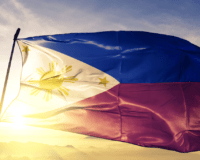Philippine Language: A Diverse Linguistic Landscape
The Philippines is a linguistically rich country, with over 170 languages spoken across its 7,000 islands, making it one of the most linguistically diverse nations in the world. This vast array of languages and dialects reflects the Philippines’ complex history, varied geography, and rich cultural heritage. As an archipelago, the Philippines’ geographic separation has naturally led to the development of distinct linguistic communities, with each island or region preserving its unique language and dialect over centuries. This linguistic diversity is a testament to the adaptability and resilience of the Filipino people, who have continuously embraced new influences while holding onto their cultural roots.
While Filipino and English serve as the official languages, each region proudly preserves its native language or dialect, showcasing a blend of indigenous roots, Spanish colonial influences, American cultural impact, and ties to neighboring Asian cultures. Filipino, largely based on Tagalog, serves as the national language and is widely spoken, especially in Metro Manila and surrounding areas. Yet, each of the country’s regions—from the northern provinces of Luzon to the central Visayas and the southern island of Mindanao—boasts its own primary language or dialect that is deeply intertwined with regional traditions, literature, and local identity.
The linguistic diversity of the Philippines not only serves as a means of communication but also instills a profound sense of identity and pride for Filipinos. Languages in the Philippines are more than just words and grammar; they carry the stories, customs, and history of generations, often passed down through oral traditions, songs, and rituals. Each language represents a piece of the Filipino cultural mosaic, connecting Filipinos to their ancestral roots, history, and unique perspectives on life.
The presence of Spanish and American influences has left an indelible mark on the linguistic landscape. Spanish colonization introduced many loanwords into various Philippine languages, particularly in relation to food, religion, and government. For instance, words such as mesa (table), iglesia (church), and kapitan (captain) are just a few examples of Spanish-derived terms that remain widely used across the islands. American influence introduced English as a secondary official language, which has shaped modern Filipino culture, especially in education, government, and commerce. The widespread use of English in the Philippines has enabled Filipinos to become fluent communicators in one of the world’s most widely spoken languages, while still maintaining their native languages at home and within their communities.
In this article, we’ll delve into the primary languages of the Philippines, their historical origins, regional significance, and the integral role they play in Filipino culture and daily life. Each language carries a legacy of the country’s history, showcasing the resilience and adaptability of the Filipino people, and offering a fascinating insight into the cultural richness that defines the Philippines. Whether spoken in bustling city streets, quiet mountain villages, or coastal fishing communities, the languages of the Philippines are a vibrant expression of the nation’s diverse identity.
1. The Official Languages: Filipino and English
The Philippines has two official languages, Filipino and English, both of which are used in government, education, and media.
Filipino Language: The National Identity
The Filipino language, based primarily on Tagalog, is the national language and is spoken and understood by the majority of Filipinos. Filipino was developed in the 20th century to create a national language that could unify the country’s diverse linguistic groups. While Filipino is mostly similar to Tagalog, it incorporates vocabulary and linguistic elements from other regional languages, making it more inclusive and representative of the nation.
English: The Language of Business and Education
English has been an official language of the Philippines since American colonial rule in the early 20th century. Today, it remains widely spoken and is used in formal settings such as business, legal proceedings, and academia. English proficiency is high in the Philippines, making it a popular destination for English-language call centers and international business outsourcing. This bilingual system allows Filipinos to communicate globally while preserving their national and regional languages.
2. Major Regional Languages in the Philippines
Aside from Filipino and English, many Filipinos speak one or more regional languages, which are recognized as auxiliary languages and are used in their respective regions. Some of the most prominent regional languages include:
Tagalog
Tagalog, spoken in Metro Manila and surrounding areas in Luzon, is the foundation of the Filipino language. As the language of the capital, it holds significant cultural and media influence and is widely spoken across the country. Tagalog literature, including famous epics and folk songs, contributes to the national identity and is a major part of Filipino culture.
Cebuano
Cebuano is the most widely spoken regional language in the Visayas and Mindanao regions, with speakers in Cebu, Negros Oriental, Bohol, and parts of Mindanao. Cebuano is used in local media, literature, and day-to-day interactions. With over 20 million speakers, Cebuano plays a vital role in connecting communities across the Visayas and beyond.
Ilocano
Ilocano is the language of northern Luzon, spoken by the Ilocano people. With around 8 million speakers, Ilocano is known for its rich oral traditions, folk songs, and literature. The language has a strong identity and is celebrated through festivals and cultural events in the Ilocos region.
Hiligaynon (Ilonggo)
Hiligaynon, also known as Ilonggo, is spoken in Western Visayas, particularly in Iloilo, Negros Occidental, and Capiz. Known for its melodic sound, Hiligaynon reflects the warm hospitality of the people in this region. The language is an essential part of the region’s culture, especially during local festivals like the Dinagyang and MassKara.
Waray
Waray is spoken in the Eastern Visayas, particularly in Leyte and Samar. With its roots in Austronesian languages, Waray is a language with deep cultural ties. Despite natural disasters that have affected the region, Waray-speaking communities preserve their language and traditions, which play a significant role in local identity.
Bikolano
Bikolano, or Bicol, is spoken in the Bicol region of southern Luzon. This language is known for its expressive vocabulary and unique phonetics, making it distinct from other Philippine languages. The Bicol region, rich in volcanic landscapes and spicy food, reflects its cultural identity through Bikolano, celebrated in songs, festivals, and traditions.
3. Indigenous Languages: A Link to Ancestral Roots
Beyond the major regional languages, there are over 100 indigenous languages spoken by various ethnic groups across the Philippines. These languages are often at risk of endangerment due to urban migration and the prevalence of Filipino and English.
Some of the significant indigenous languages include:
- Ivatan (Batanes): Spoken by the Ivatan people in Batanes, this language reflects the unique island life and agricultural practices of the northernmost province.
- Ifugao (Cordillera): Known for its association with the famous Banaue Rice Terraces, Ifugao is rich in agricultural vocabulary and local customs.
- Tausug (Sulu Archipelago): Tausug is spoken by the Tausug people of Sulu and parts of Mindanao. It carries strong cultural ties to Muslim traditions and maritime history.
- Maranao (Lanao del Sur): Maranao, with its poetic expressions and ornate vocabulary, is known for its association with the Maranao art form okir and the Islamic influence in the southern Philippines.
These languages are crucial in preserving the unique customs, stories, and cultural practices of each indigenous community. Language plays an essential role in rituals, oral traditions, and family life, serving as a bridge to ancestral heritage.
4. The Influence of Spanish on Philippine Languages
Spanish colonization left a lasting impact on the languages of the Philippines, evident in the many Spanish loanwords used in Filipino and regional languages. Words for objects, numbers, days of the week, and even some food items are of Spanish origin.
Examples of common Spanish loanwords include:
- Mesa (table)
- Silla (chair)
- Baryo (village)
- Sapatos (shoes)
Additionally, Spanish influenced the way Filipinos name places and people, with many regions, towns, and surnames bearing Spanish origins. Today, the presence of these loanwords connects Filipinos to a shared colonial history and reflects the adaptability of Philippine languages.
5. The Role of Philippine Languages in Literature and Media
Philippine languages have a vibrant presence in literature, media, and the arts. Traditional epics, folk tales, and poetry are passed down through generations in their original languages, maintaining their authenticity and emotional depth. Modern literature has also embraced regional languages, with authors and poets publishing works that reflect local culture, identity, and issues.
In recent years, regional languages have gained recognition in Philippine media. Television programs, films, and radio broadcasts often feature regional languages, especially Cebuano and Ilocano, allowing for broader representation and connection with audiences across the country. Social media platforms have also become popular spaces for expressing and preserving these languages, especially among younger generations.
6. Language Preservation and Revival Efforts
As globalization and urbanization continue to shape the Philippines, some indigenous and regional languages face the risk of endangerment. In response, there are ongoing efforts to preserve and promote these languages through educational programs, government policies, and cultural initiatives.
The Komisyon sa Wikang Filipino (Commission on the Filipino Language) actively works to promote the preservation and development of Philippine languages. Schools in many regions include local languages in their curricula, ensuring that younger generations grow up with an appreciation for their native language.
Community organizations also play a crucial role in language preservation by holding workshops, cultural events, and festivals that celebrate local languages and traditions. The rise of social media has also helped raise awareness and appreciation for Philippine languages, encouraging younger generations to learn, use, and share their linguistic heritage.
Conclusion
The linguistic diversity of the Philippines is one of the nation’s most valuable cultural assets. From the widespread use of Filipino and English to the rich array of regional and indigenous languages, each language reflects a unique piece of Filipino identity, history, and tradition. Philippine languages are more than just means of communication; they are symbols of resilience, pride, and cultural unity.
As the country continues to grow and modernize, the preservation and celebration of Philippine languages remain essential for future generations. By embracing and valuing its linguistic heritage, the Philippines continues to tell its story—a story rich in diversity, culture, and community, spoken in over 170 voices that together create a harmonious whole.



